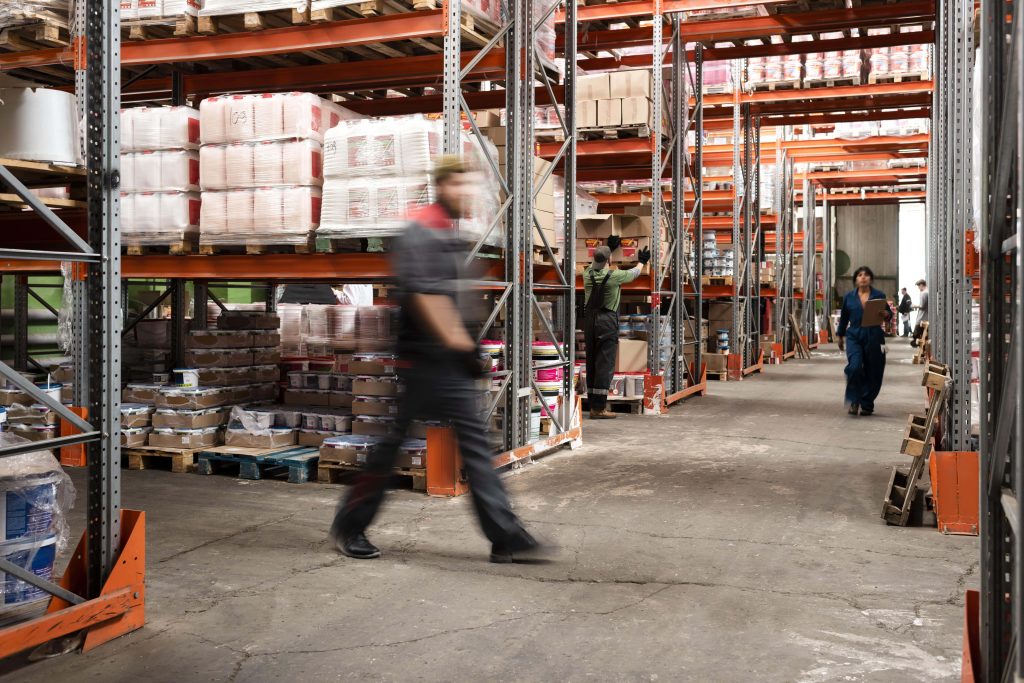The Differences in Automating Brownfield and Greenfield Distribution Centers

In the specialized field of warehouse automation, companies have either adopted the “Greenfield” or “Brownfield” approach to integrate advanced technology in their facilities. How do these approaches differ?
- The greenfield approach refers to constructing a new facility (or factory) from scratch.
- The brownfield approach refers to upgrading an existing facility to meet automation standards.
For growing companies, greenfield automation seems the more suitable solution to build their warehouse operations. On the other hand, brownfield automation is seen as a more cost-effective and strategic approach. This is also the approach companies rely on when they want to get their logistics operations off the ground quickly.
In the manufacturing domain, brownfield also involves upgrading legacy equipment and infrastructure to achieve digital transformation. Greenfield would refer to buying (or renting) new machines that meet the existing digitalization requirements.
Which of these approaches are suitable for warehouses and distribution centers (DCs)? Let’s first look at 4 major differences:
- Capital investment
As compared to brownfield projects, greenfield projects incur higher initial investment into setting up the DC or warehouse. Additionally, a greenfield investment cannot protect the company’s existing (if any) infrastructure-related investments.
Additionally, the average age of manufacturing assets and equipment in the U.S. is around 20 years. This means companies can protect their existing investment by integrating their assets into a digital infrastructure. By “retrofitting” an existing facility, companies can save major costs involved in investing in a new facility. Additionally, companies can save time otherwise lost in building a new facility.
- Warehouse management
The greenfield approach allows companies to plan their warehouse automation from the initial stages. On the other hand, in brownfield projects, companies need to incrementally implement warehouse automation and integrate them seamlessly into existing facilities. As mentioned earlier, this is often faster.
However, companies also struggle to implement greenfield automation due to internal resistance to change. With brownfield projects, warehouse operators are familiar with the existing legacy systems and are open to incremental changes. They can also share their working experience with the existing tools, thus highlighting the areas of improvement and concerns.
- Digital transformation
In the manufacturing sector and all logistics operations linked to manufacturing facilities, brownfield projects are commonly implemented when the goal is digital transformation. With the advent of Industry 4.0, manufacturers need to embrace digital innovation and transformation. However, this does not necessarily mean discarding all the legacy machines from their facility.
Using digitalization tools, companies can easily upgrade their existing infrastructure to the cloud. With technologies like Industrial IoT, edge computing, and intelligent sensors, they can have plenty of options to improve their digital capabilities.
- Implementation
Typically, greenfield projects require companies to properly plan and optimize from an early stage. Without planning, greenfield facilities are more likely to fail – or not deliver the expected results. On the other hand, brownfield implementation involves a phased approach – where companies can focus on individual infrastructural elements (instead of a complete overhaul).
Hence, the brownfield approach is more practical and cost-effective for any company. With the right technology partner, companies can also minimize their operational downtime and productivity losses.
Why Brownfield is the future of DCs
Due to the 2020 global pandemic, there was a significant surge in greenfield projects in the warehouse domain. This was mostly because of the sudden increase in incoming inventory. However, in 2023, there’s been a 25% slowdown in new warehouse construction in the U.S. and Europe. Most companies are “shying” away from making massive greenfield investments. Construction and automation of a new warehouse facility can cost around $100 million.
More companies are exploring brownfield projects to reduce their development costs and improve the performance of their existing facilities. This is because most of the existing facilities have the necessary infrastructure like civil infrastructure, utilities, and racking systems already in place. This, in turn, can significantly reduce the requirement for construction work, permits, and architectural work.
According to Gartner, over 75% of DCs and warehouses will implement automation by 2027. This can help increase their storage capacity in a smaller facility area. In the case of underperforming facilities, retailers can easily convert them into an order fulfillment center or dark store. However, brownfield facilities are not best suited to many of the methods used to automate workflows in the form of mobile robots and automated storage. This is because many of these approaches demand floor preparation or significant to massive changes to the racking and other infrastructure. These changes take time, cost money, and such up bandwidth. That being said, using revolutionary automation approaches like Carte+ makes it easy for even brownfield facilities to achieve high throughput automation.
Once that is achieved, brownfield projects could easily be seen as the future of DCs because of:
- Proper utilization of abandoned or underutilized facilities or properties.
- Higher scope to use the existing infrastructure
- Proximity to urban centers and population
- Redevelopment initiatives from government agencies for cost-saving.
Conclusion
To summarize, it’s easy to see how companies are opting for the brownfield approach instead of new greenfield projects. Along with reducing warehouse development costs, brownfield projects enable companies to protect their existing infrastructural investment. These companies though, are conscious of the challenges of automating brownfield facilities. They are wary of the time, cost, and effort involved in floor preparation, civil changes, and re-racking.
With its expertise in implementing brownfield projects, Cartesian Kinetics is accelerating order fulfillment with its flagship automation solution, Carte+. Here’s why Carte+ is the best fit for warehouse automation:
- Easier retrofitting with existing racks.
- No overhauling of the existing warehouse facility
- Higher throughput
We can help you gain a competitive edge. Reach out to us today!

